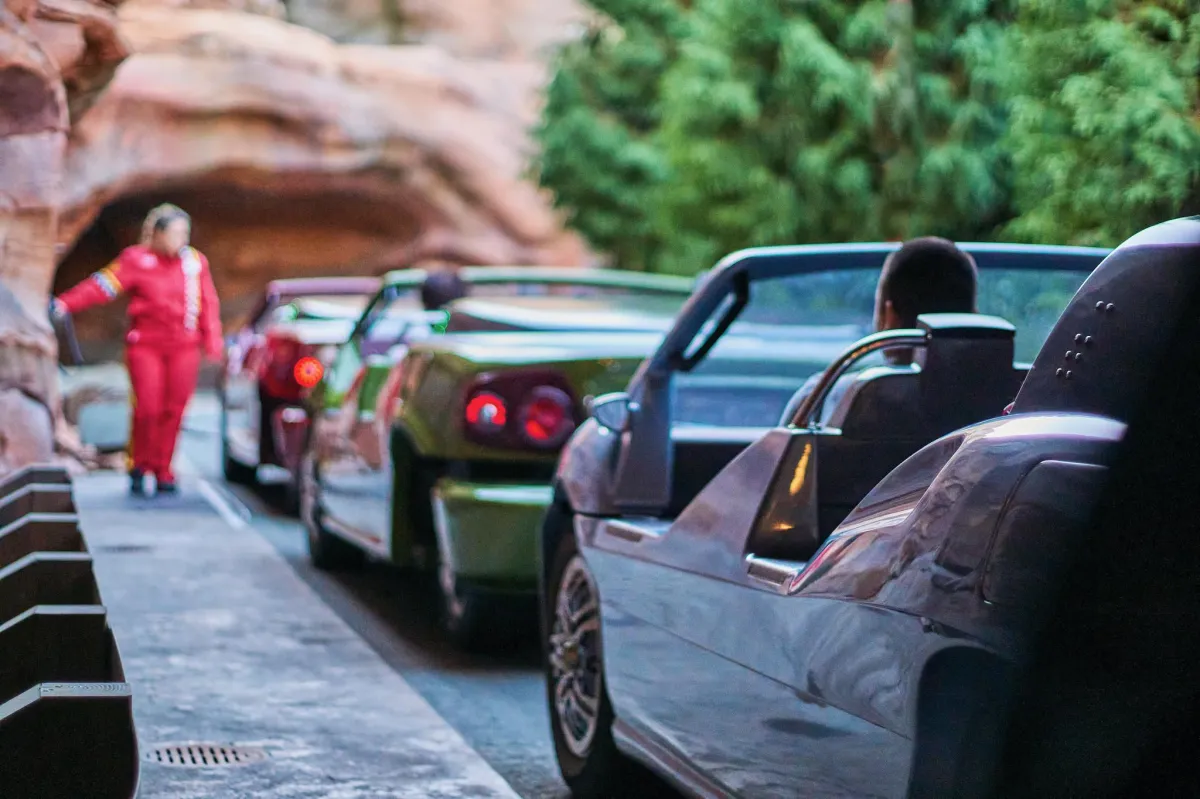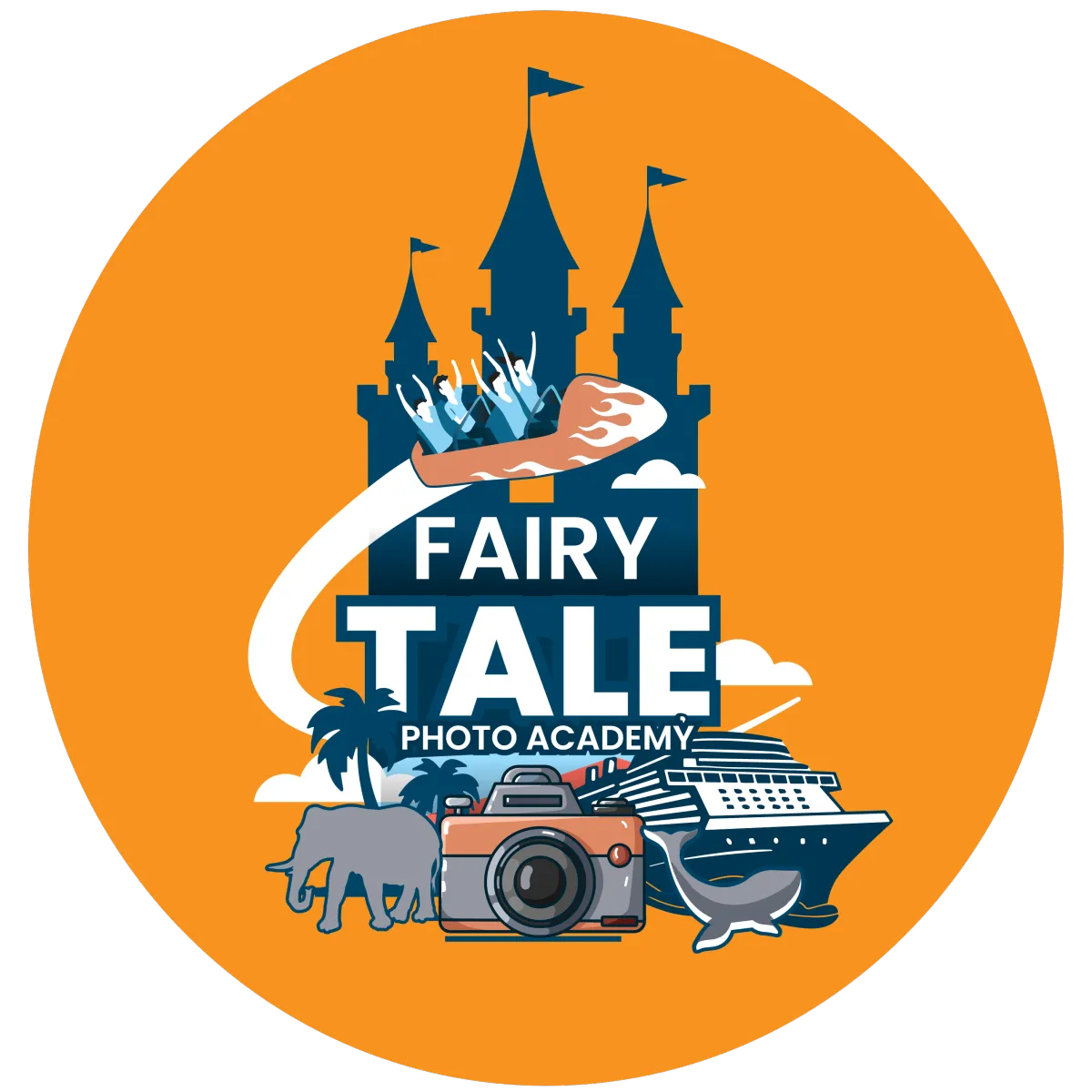
Directing the Gaze: Mastering Leading Lines in Park Photography
Take a good look at the photo attached to this article.
Did your eyes naturally gravitate toward the vehicle closest to you? Once you took in the details of that car, did your gaze begin drifting down the line of vehicles until finally settling on the cast member in the red jumpsuit?
No, I didn’t just read your mind. While it might seem like magic, the truth is this photo was designed to guide your eyes through the frame. This is what photographers call a leading line.
Why Your Eyes Move the Way They Do
The closest vehicle is the largest and sharpest object in the photo. Our eyes are hardwired to notice the biggest, clearest thing first—it’s part of that ancient “fight or flight” system designed to keep us alive. Once your brain recognizes that the car isn’t a threat, your eyes start exploring.
From there, the line of cars naturally pulls your attention deeper into the frame. Each successive car is a bit smaller and blurrier, signaling distance. Finally, your eyes land on the cast member in the red jumpsuit, standing at the end of the line. Even though her uniform is bright, the blur makes her secondary—a reward for following the visual path.
Other elements reinforce this journey:
The curb creates a literal line pointing your eyes toward the cast member.
The staggered guardrail posts on the left create rhythm and direction.
The dark tones on the edges act like visual bumpers, nudging your gaze back toward the action.
It’s not an accident—it’s intentional design.
The Photographer’s Secret Power
Leading lines are one of the most powerful tools we have as photographers. They let us control the viewer’s journey, deciding what they see first, what they see second, and what their “destination” will be.
Here are a few ways to put this into practice:
Change your perspective: Get lower to the ground so pathways and handrails dominate the frame. They’ll act like arrows guiding the eye.
Use light and shadow: Bright areas attract attention, dark areas push the gaze away. Vignettes (darkened corners) can subtly funnel the viewer’s focus.
Work with converging lines: Roads, pathways, or even tracks that meet in the distance create depth and pull the eye toward the point of convergence.
Remember curves count too: A winding river, a sweeping pathway, or even a roller coaster track can all lead the viewer’s eyes on a journey.
Theme Parks Are Masters of Leading Lines
Theme park designers use the exact same techniques to guide your experience. Think about walking into a Disney castle park: you’re funneled through side tunnels, then released into Main Street that blocks your view until you reach a central street, where every building and every angle leads your eyes (and your feet) straight toward the castle.
From architecture to landscaping, everything is placed with intention—just like in great photography.
Your Turn
The next time you’re in a park, look for natural lines—pathways, fences, ride tracks, parades—and experiment with how they can direct the gaze in your photos. With practice, you’ll transform crowded, chaotic scenes into images that feel purposeful and polished.
Want more tips for capturing unforgettable theme park photos? Download my free guide here and start bringing home epic vacation photos you’ll treasure forever.

